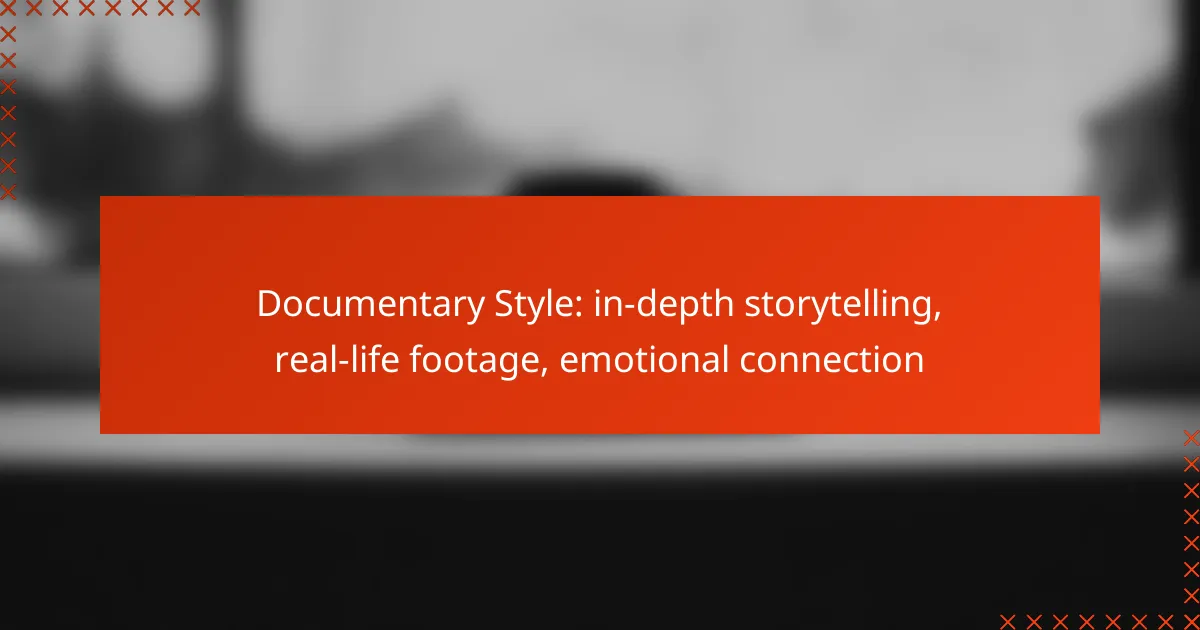Testimonial videos serve as powerful tools for building customer trust by presenting authentic feedback from real users. By sharing relatable stories and experiences, these videos not only enhance credibility but also empower potential customers to make informed purchasing decisions.

How do testimonial videos build customer trust?
Testimonial videos build customer trust by showcasing genuine feedback from real users, which enhances credibility and relatability. These videos provide potential customers with insights into the experiences of others, making them feel more confident in their purchasing decisions.
Showcasing authentic experiences
Testimonial videos highlight authentic experiences by featuring real customers sharing their stories. This authenticity resonates with viewers, as they can see and hear from individuals who have faced similar challenges. When potential customers witness genuine interactions, it fosters a sense of trust in the brand.
For example, a video featuring a customer discussing how a product solved a specific problem can be more persuasive than written reviews. This visual storytelling allows viewers to connect with the narrative on a personal level.
Creating emotional connections
Emotional connections are vital in building trust, and testimonial videos excel at this by conveying feelings and personal journeys. When customers share their experiences, they often express emotions such as relief, happiness, or satisfaction, which can be contagious for viewers.
Using relatable stories, brands can evoke empathy and inspire potential customers to envision themselves in similar situations. This emotional engagement can significantly influence purchasing decisions, as people are more likely to trust brands that resonate with their feelings.
Highlighting real-life benefits
Testimonial videos effectively highlight the real-life benefits of products or services by showcasing tangible outcomes. When customers describe how a product improved their lives, it provides concrete evidence of its value.
For instance, a video demonstrating how a fitness program helped someone achieve their health goals can illustrate the program’s effectiveness. This practical demonstration of benefits helps potential customers understand what they can expect, making them more inclined to trust the brand.
Encouraging peer validation
Peer validation is a powerful trust-building tool, and testimonial videos capitalize on this by showcasing satisfied customers. When viewers see others endorsing a product, it reinforces the idea that the product is reliable and worth considering.
Incorporating diverse testimonials from various demographics can further enhance this effect, as it shows that the product appeals to a wide audience. This validation from peers can significantly influence potential customers’ decisions, as they often seek reassurance from others before making a purchase.

What are the best practices for creating testimonial videos?
Creating effective testimonial videos involves several best practices that enhance credibility and relatability. Focus on selecting the right customers, crafting compelling stories, ensuring high production quality, and incorporating clear calls to action.
Choosing the right customers
Selecting the right customers for your testimonial videos is crucial for authenticity. Aim for individuals who represent your target audience and have had positive experiences with your product or service. Their stories should resonate with potential customers, making them more relatable.
Consider using a diverse range of customers to showcase different use cases and demographics. This approach can help potential clients see themselves in the testimonials, increasing the likelihood of trust and engagement.
Focusing on storytelling
Storytelling is a powerful tool in testimonial videos. Instead of simply stating facts, encourage customers to share their journey, challenges, and how your product or service made a difference. This narrative format creates an emotional connection with viewers.
Structure the story with a clear beginning, middle, and end. Start with the customer’s problem, introduce your solution, and conclude with the positive outcome. This format helps maintain viewer interest and emphasizes the value of your offering.
Ensuring high production quality
High production quality is essential for credibility in testimonial videos. Invest in good lighting, clear audio, and professional editing to create a polished final product. Poor quality can detract from the message and make viewers question the authenticity of the testimonials.
Use a simple setup that highlights the customer without distractions. A clean background and appropriate framing can significantly enhance the overall presentation. Aim for a video length of around one to three minutes to keep it concise and engaging.
Incorporating clear calls to action
Every testimonial video should include a clear call to action (CTA) to guide viewers on the next steps. Whether it’s visiting your website, signing up for a newsletter, or making a purchase, a strong CTA can significantly increase conversion rates.
Position the CTA at both the beginning and end of the video for maximum impact. You can also include on-screen text or links to make it easy for viewers to follow through. Ensure the CTA aligns with the message of the testimonial to reinforce the desired action.

How can businesses leverage testimonial videos in advertising?
Businesses can effectively use testimonial videos in advertising to build trust and showcase relatable customer experiences. These videos highlight real feedback, making potential customers more inclined to engage with the brand.
Integrating videos into social media campaigns
Incorporating testimonial videos into social media campaigns can significantly enhance engagement. Platforms like Facebook, Instagram, and TikTok allow businesses to share authentic customer stories, which can resonate well with audiences.
Consider using short clips that capture key moments of customer satisfaction. Aim for videos that are under a minute to maintain viewer attention and encourage shares.
Using videos on landing pages
Embedding testimonial videos on landing pages can boost conversion rates by providing social proof. When potential customers see real users discussing their positive experiences, they are more likely to trust the brand.
Ensure the video is prominently placed and easily accessible. A good practice is to keep the video length between one to two minutes to convey the message effectively without overwhelming visitors.
Embedding videos in email marketing
Including testimonial videos in email marketing can increase click-through rates and engagement. Videos can make emails more dynamic and appealing, encouraging recipients to take action.
Use a thumbnail image linked to the video to avoid compatibility issues with email clients. Keep the email content concise and highlight the video’s value to entice viewers to click.
Utilizing video ads on platforms like YouTube
Video ads featuring testimonials on platforms like YouTube can reach a broad audience and enhance brand credibility. These ads can be targeted based on user interests, demographics, and viewing habits.
Consider creating a series of short testimonial ads that focus on different aspects of your product or service. This approach can help maintain viewer interest and reinforce brand messaging across various touchpoints.

What metrics measure the effectiveness of testimonial videos?
To evaluate the effectiveness of testimonial videos, focus on metrics such as viewer engagement rates, conversion rates, social media shares, and audience feedback. These indicators provide insights into how well the videos resonate with viewers and contribute to building trust and driving action.
Tracking viewer engagement rates
Viewer engagement rates indicate how effectively a testimonial video captures and retains audience attention. Metrics like average watch time, click-through rates, and interaction rates (such as likes and comments) are essential. Aim for an average watch time of at least 50% of the video length to ensure strong engagement.
To improve engagement, consider optimizing video length to around 1-2 minutes, as shorter videos tend to perform better. Use captivating visuals and storytelling techniques to maintain interest throughout the video.
Analyzing conversion rates
Conversion rates measure how many viewers take a desired action after watching a testimonial video, such as signing up for a newsletter or making a purchase. A good benchmark for conversion rates is typically between 2-5%, depending on the industry. Tracking these rates helps determine the video’s effectiveness in driving business goals.
To enhance conversion rates, include clear calls to action within the video and ensure that the testimonials address common customer pain points. A/B testing different versions of the video can also provide insights into what resonates best with your audience.
Monitoring social media shares
Social media shares reflect how well a testimonial video resonates with viewers and encourages them to spread the word. High share rates can amplify reach and credibility, as content shared by peers is often viewed as more trustworthy. Aim for a share rate of at least 1-2% of total views for effective performance.
To boost shares, create emotionally engaging content that viewers feel compelled to share. Incorporating share buttons directly in the video or on the hosting page can also facilitate this process.
Assessing audience feedback
Audience feedback provides qualitative insights into how viewers perceive a testimonial video. Collecting comments, ratings, and direct surveys can help gauge viewer sentiment and identify areas for improvement. Look for patterns in feedback to understand what elements resonate most with your audience.
Encourage viewers to leave feedback by asking specific questions at the end of the video or through follow-up emails. This can lead to valuable insights that inform future video content and marketing strategies.



